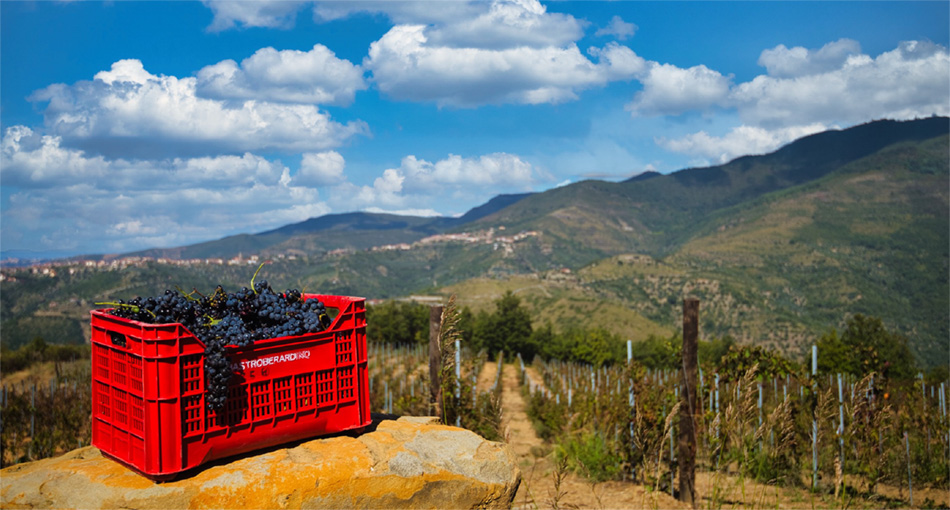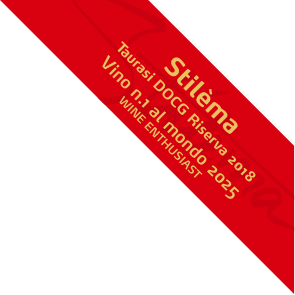
The vineyard that gives life to Serra di Molino a Vento is grown on the slopes of Monte Stella, in the Cilento hinterland, at an altitude between 508 and 556 meters above sea level, and overlooks the renowned beaches of Acciaroli, enjoying a predominantly western exposure. The plant, started in 2018, insists in the production area of IGT Paestum, in the territory of the Municipality of Pollica, the heart of the Cilento, Vallo di Diano and Alburni National Park, the epicenter of studies on the Mediterranean Diet.
The territory, characterized by lush Mediterranean scrub, has clayey-calcareous soils, originating from flysch – sedimentary rocks of marine origin – consisting of alternating sandstone, clay and limestone that appear composed of stratifications of considerable thickness that can certainly mark the qualitative expression of a great red wine. The consistency of the soil, the presence of widespread and heavy clays, the limited depth of the profile, rather than oxygenation, represent the main factors of the terroir that predisposes to the potential production of a great red wine for aging.
The microclimatic conditions, together with the pedological ones, contribute to making this territory an area particularly suited to the viticulture of red grape varieties, and of Aglianico in particular, given the characteristics of aridity of the soil and the predisposition to water stress that can determine the arrest of vegetative growth before veraison.
The lower temperatures connected to the altitude determine a lengthening of the growing season that can also be contained by the mitigating effect of the sea breeze. The site is, as the crow flies, less than 3 km from the sea. The exposure to the west and the slope of the slope determine conditions of good radiation of the area in question and good mitigation of the excessively arid climate.
The surprising Aglianico that is given to us by the high hills of Cilento is vinified with a maceration of the skins at a controlled temperature of about 20-22° for 12 days. After racking, the malolactic fermentation takes place and, subsequently, the refinement in oak barriques begins for at least 24 months. A period of refinement in the bottle follows for a further six months.

